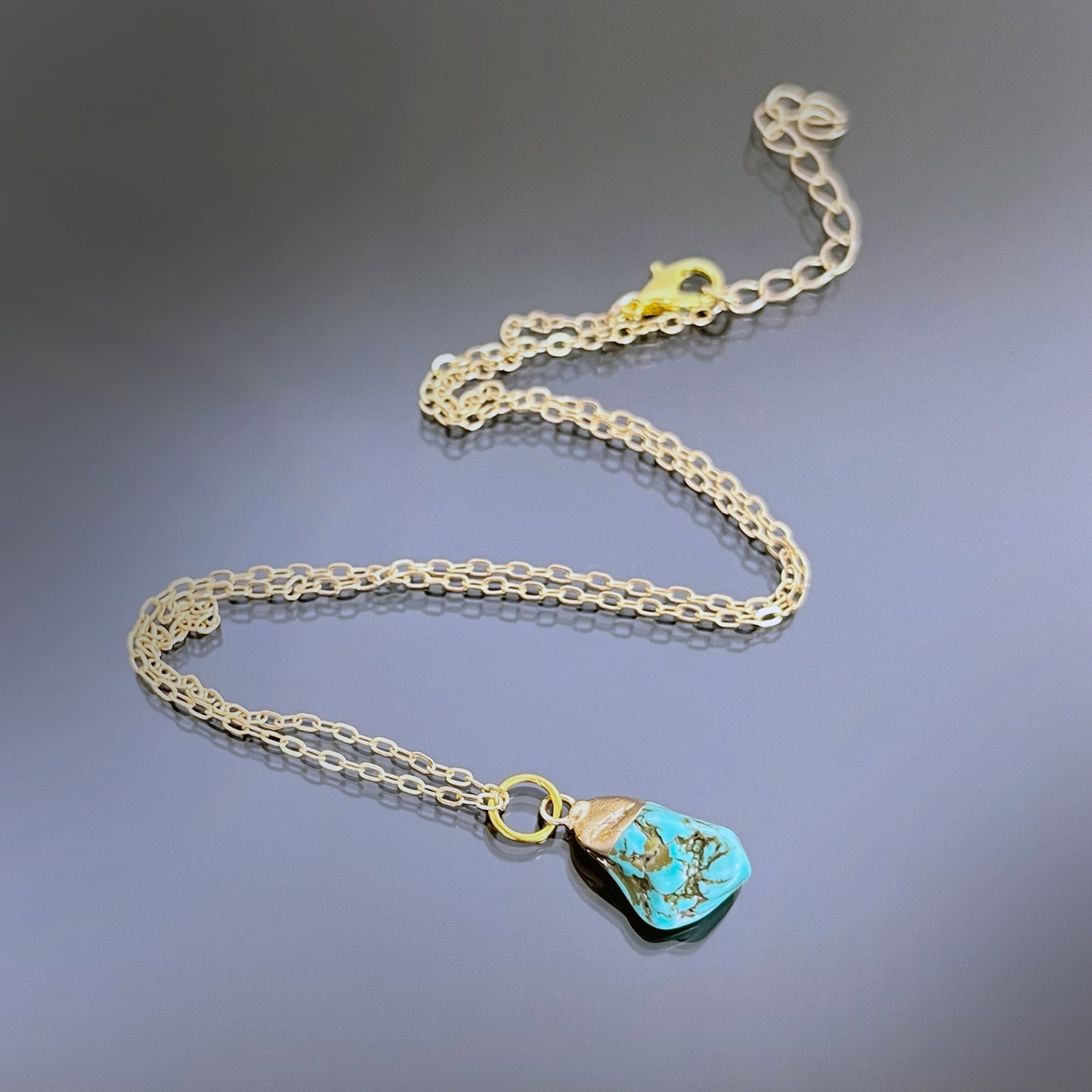Aquelia Design
Колие с необработен тюркоаз
Колие с необработен тюркоаз
Редовна цена
€49,00 EUR
Редовна цена
€67,00 EUR
Продажна цена
€49,00 EUR
Единична цена
/
по
С включени данъци.
Доставката се изчислява при плащане.
Наличността за получаване на място не можа да се зареди
Тюркоазът е популярен и исторически значим скъпоценен камък, известен със своя поразителен син до зелен цвят. Ето основните свойства и характеристики на тюркоаза:
Физически свойства:
- Химическа формула : CuAl₆(PO₄)₄(OH)₈·4H₂O (медно-алуминиев фосфат)
- Цвят : Небесно синьо, синьо-зелено, зелено
- Кристална система : Триклиника
- Твърдост : 5 до 6 по скалата на Моос
- Специфично тегло : 2,31 - 2,84
- Прозрачност : Непрозрачен
- Блясък : Восъчен до подстъклен
- Ивица : Бяла до зеленикава
Оптични свойства:
- Индекс на пречупване : 1,61 - 1,65
- Двойно пречупване : Няма (тъй като тюркоазът обикновено е непрозрачен)
- Плеохроизъм : Няма
- Флуоресценция : Обикновено няма, но някои екземпляри могат да проявят зеленикава или синкава флуоресценция под UV светлина
Лечебни и метафизични свойства:
- Енергия : Тюркоазът се счита за мощен лечебен и защитен камък.
- Чакри : Основно свързани с гърлената чакра, подобрявайки комуникацията, но също така свързани с чакрата на третото око за интуиция и духовно напътствие.
- Емоционално изцеление : Смята се, че насърчава спокойствието, баланса и емоционалната стабилност. Също така се смята, че помага при себеизразяването и творчеството.
- Физическо лечение : Използва се в практики за лечение на кристали за подпомагане на имунната система, детоксикация на тялото и облекчаване на респираторни проблеми. Смята се също, че насърчава регенерацията на тъканите и намалява възпалението.
Употреби:
- Бижута : Широко използвани в различни видове бижута, включително колиета, пръстени, обеци и гривни. Уникалният му цвят го прави популярен избор за изявени фигури.
- Декоративен : Използва се в дърворезби, скулптури и декоративни предмети, както и инкрустации в различни декоративни елементи.
- Лекуване : Обикновено се използва в паднали камъни, кабошони и необработени кристали за лечение на кристали и метафизични практики.
Грижи:
- Почистване : Трябва да се почиства с топла сапунена вода и мека кърпа. Избягвайте агресивни химикали, ултразвукови почистващи препарати и продължително излагане на слънчева светлина или топлина, които могат да повредят камъка.
- Издръжливост : Тюркоазът е сравнително мек и порест, така че трябва да бъде защитен от надраскване, удари и излагане на масла, парфюми и други химикали.
източници:
- Основни източници : Тюркоазът се намира на няколко места по света, със значителни находища в Съединените щати (Аризона, Ню Мексико, Невада), Иран, Египет, Китай и Тибет.
Съвети за идентификация:
- Цвят и текстура : Отличителният син до зелен цвят, често с жилки или матрични шарки, е ключов признак за идентификация.
- Порьозност : Тюркоазът е порест и може да абсорбира масла и други вещества, които могат да повлияят на цвета му.
- Тестване : Гемологичните тестове могат да потвърдят тюркоаз чрез неговата специфична гравитация, индекс на пречупване и твърдост.
Забележителни характеристики:
- Матрични шарки : Тюркоазът често съдържа вени или петна от скалата-домакин, известна като матрицата, която може да създаде интересни шарки и да добави към неговата уникалност.
- Историческо значение : Тюркоазът е бил използван от хиляди години от различни култури за бижута, амулети и религиозни артефакти. Това е особено важно в индианската, египетската и персийската култури.
- Стабилизиране : Поради своята порьозност и относително ниска твърдост, тюркоазът често се стабилизира със смоли или други обработки, за да се подобри неговата издръжливост и цвят.
Живият цвят, богатата история и метафизичните свойства на тюркоаза го правят ценен скъпоценен камък както в бижутата, така и в лечебните практики. Културното му значение и широкият спектър от приложения допълнително допринасят за неговата трайна популярност
Дължина: 44см+5см
Кристал: 1.5см-3см
Сподели


